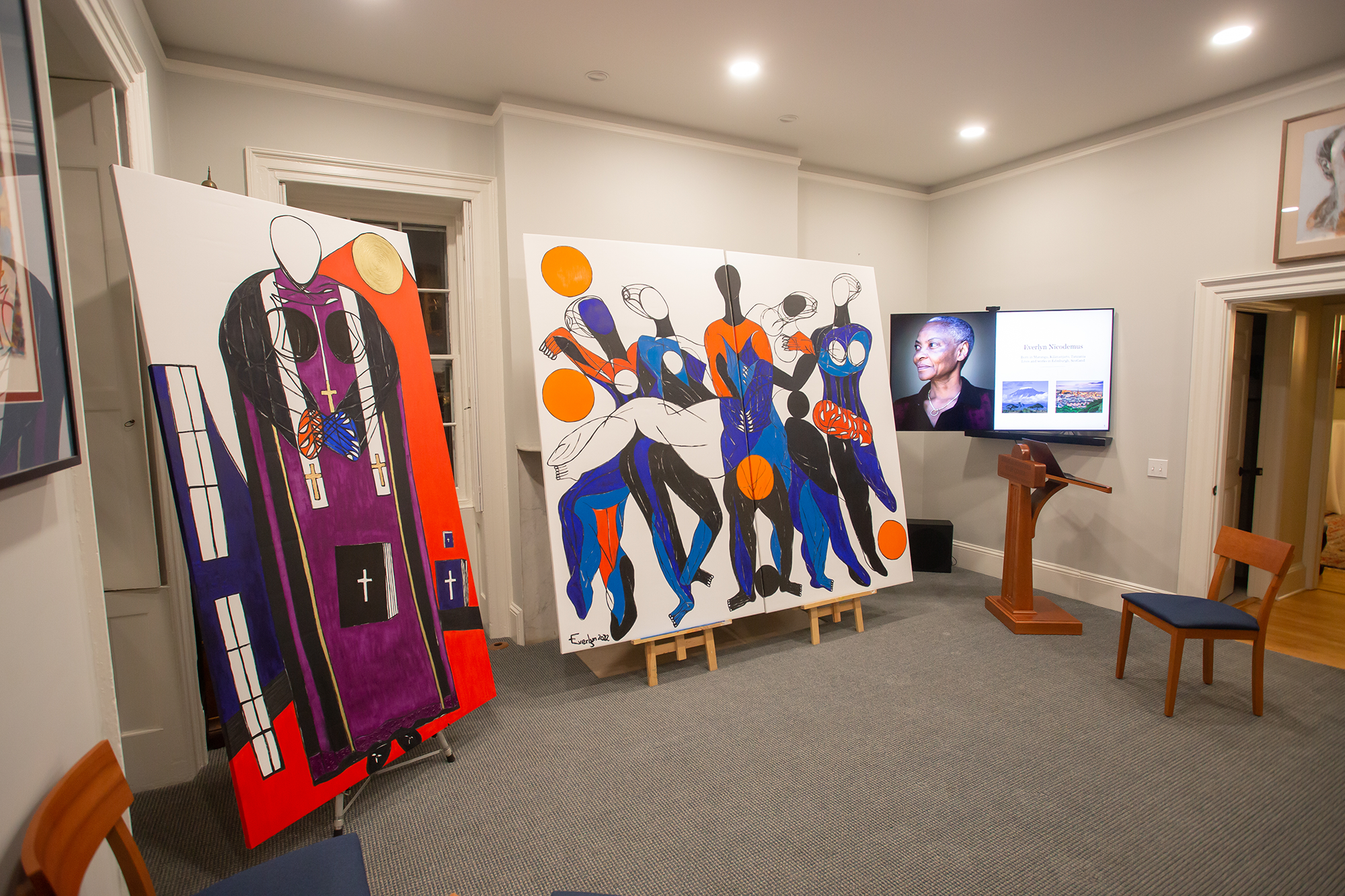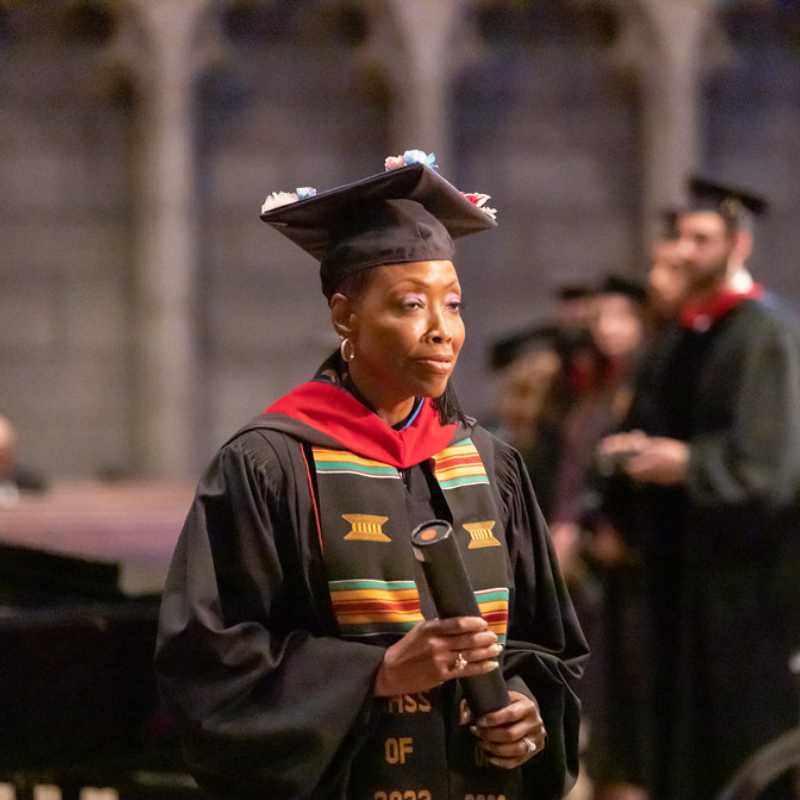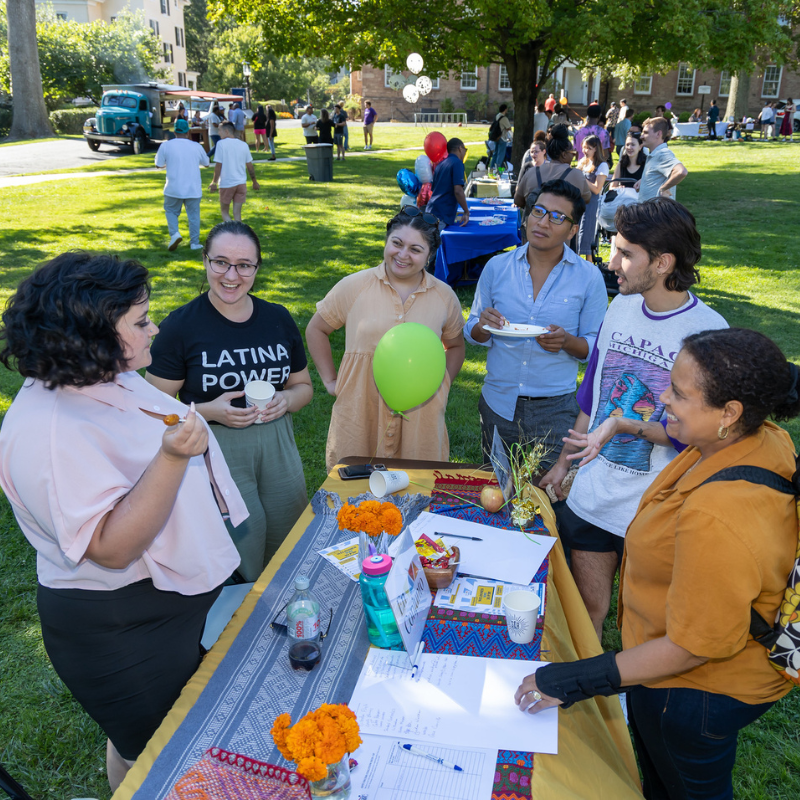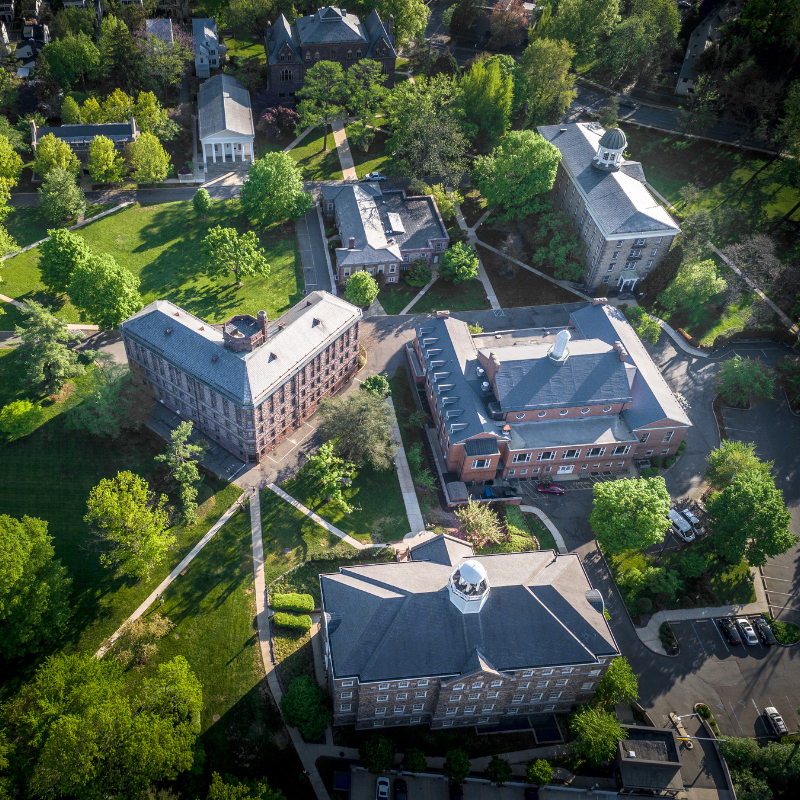Artist-in-Residence: Everlyn Nicodemus
May 30, 2023 | Featured, Music & Art, Overseas Ministries Study Center, Public

As faculty, staff, and students at Princeton Theological Seminary went about their day-to-day routines this year, an African-born artist known for exploring themes of trauma, oppression, and female strength was quietly creating powerful paintings in a basement studio on campus.
Everlyn Nicodemus, described as one of the strongest feminist voices to emerge from Eastern Africa in three decades, arrived at the Seminary last August as part of an artist-in-residence program that is brand new to campus—the handiwork of the Overseas Ministries Study Center (OMSC), a research institute that recently became part of the Seminary.
For Nicodemus, who is based in Edinburgh, Scotland, the residency was also a new experience. It was the first time in her 40-year-career that she was given access to a large, professionally equipped studio.
“This studio is four times the size of my little one-bedroom flat in Edinburgh,” she says of her workspace in the basement of the Erdman Center. “It inspires me, and when I am inspired, I work. I spend seven days a week in this studio.”
Nicodemus, who grew up in Tanzania, has lived most of her adult life in Europe as an artist, writer, and scholar. Although long known in art circles for pathbreaking and provocative works like her 52-foot Reference Scroll on Genocide, Massacres and Ethnic Cleansing, Nicodemus today is on the verge of breaking through to a much wider audience.
A series of oil paintings she completed in the late 1980s called Silent Strength was exhibited through May 6 at the Andrew Kreps Gallery in Tribeca—her first U.S. solo exhibit. In 2024, her work will be the subject of a thorough retrospective at the National Gallery of Scotland as part of the Freelands Prize she was awarded last fall.
“I have been practicing for over 40 years, and this is the best time I have ever had as an artist,” she says. “And I am expressing in my work the joy I feel; the joy of being a woman, the joy of being an artist.”
That sense of joy is palpable in one of her recent paintings, Dancing with the Sun II, which shows a tightly-knit group of female figures carrying another woman in an act of communal care. The figures seem entwined in an intimate dance, with some kicking up their heels.

That painting, one of the dozens of works produced during her residency, was presented to Seminary President Jonathan Lee Walton at the OMSC Gala on Feb 1 and will soon be prominently displayed at the Seminary.
“It’s this incredibly uplifting depiction of one figure who is totally depleted but held up by this community of women,” says Thomas Hastings, the executive director of OMSC. “It depicts a community of trauma and a community of healing.”
The OMSC, which was headquartered in New Haven for decades, has held its artist-in-residence program since the early 2000s—an effort to bring an artist’s perspective to global Christian issues that the center focuses on in its research.
As Hastings was planning this year’s residency—the first in OMSC’s new home at Princeton Seminary—he consulted with a Seminary colleague, Afe Adogame, the Maxwell M. Upson Professor of Religion and Society, who recommended Nicodemus.
Hastings agreed she was an ideal choice. The OMSC’s research into world Christianity, he explains, is attuned to silent and silenced voices, especially those from oppressed and marginalized communities. And, he added, Nicodemus’s artistic reflections on trauma and suffering are essential viewing for students training for ministry.
“Evelyn has experienced trauma in her life, and she has witnessed trauma,” Hastings said. “Her work is not just a commentary, but an interpretation of trauma, and it embodies expressions of deep hope and communal healing.”
Nicodemus grew up in the Tanzanian town of Marangu, known as a gateway to Mount Kilimanjaro. She has long resisted societal limitations on women. As a child, she says, she wanted to be a carpenter, like her father, or a Lutheran bishop.
She moved to Sweden in the 1970s and was shocked to her core by the racism she experienced.
“If you are growing up where I grew up, among the Chagga people, you don’t even think about the color of your skin, because everyone looked like you,” she said.
She began painting in 1980, channeling those experiences into her art, eventually taking on universal themes of persecution and oppression. For her Reference Scroll, she used digitally printed texts from the two-volume Encyclopedia of Genocide by the scholar Israel W. Charny, added other sources, including her own research, and joined it all together with meticulously stitched linen columns.
Nicodemus described in a published essay the experience of slowly stitching together text that connected Auschwitz to Cambodia to Rwanda, and many others.
“My intention was to make our frightening collective memories and history visibly present at the exhibition, which I believe is a slightly different experience from reading about them in books,” she wrote.
In later years, Nicodemus took time out from painting. She earned her PhD in African Modern Art and Black Cultural Trauma, co-authored a textbook on art, and took care of her ailing husband. But in 2022, London gallerist Richard Saltoun brought her into the spotlight, staging her first solo exhibition since 2007.
Nicodemus said she’s grateful for the renewed attention as she enters one of the most productive periods of her career.
But she notes that it comes during an upsurge of authoritarianism in the world, and a heightening of racist and anti-immigrant sentiments in the West.
“There is a kind of regression; neo-Nazis are returning, and there is violence against the other, against people who look different,” she says. “All types of repression distress me, and in one form or another, my art will continue to take on the issue of trauma, the trauma we cause each other.”





